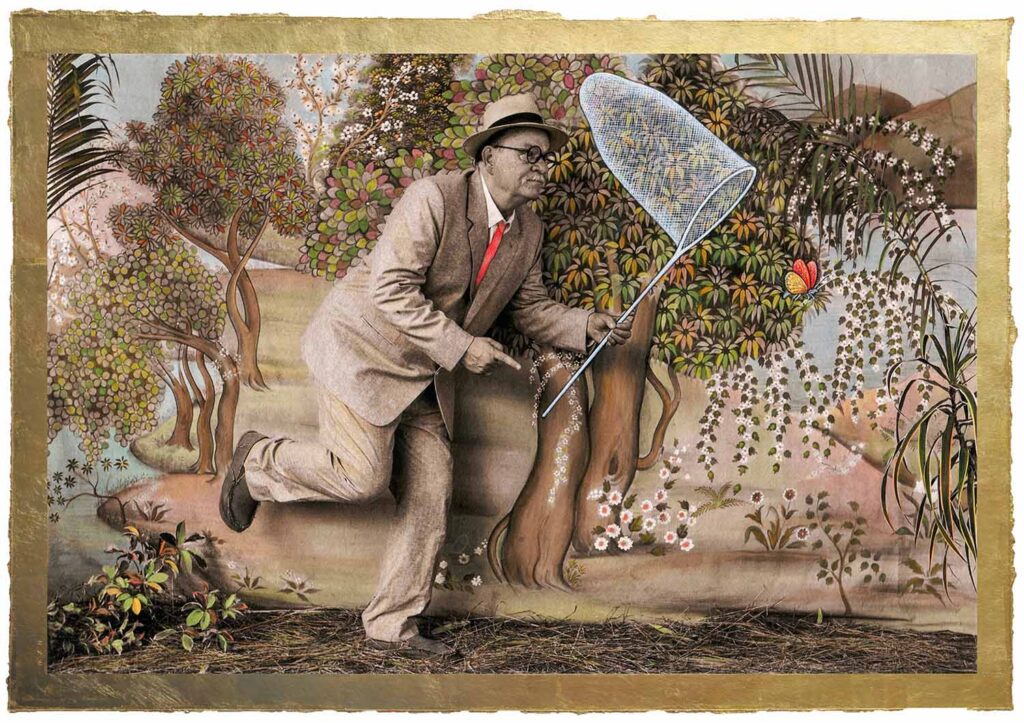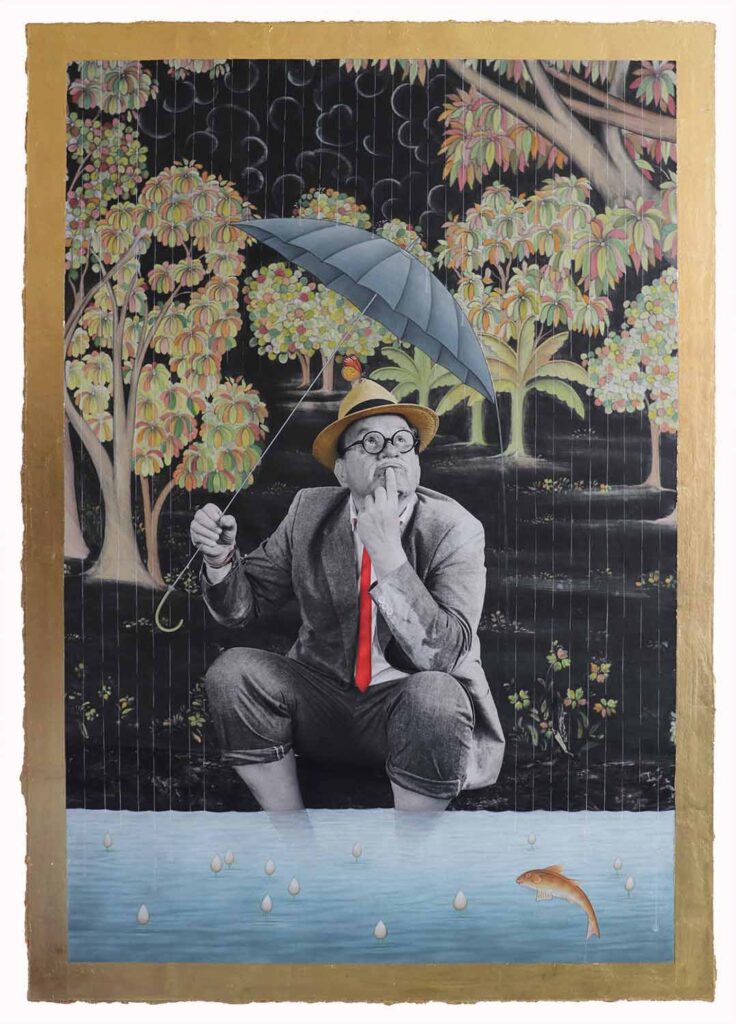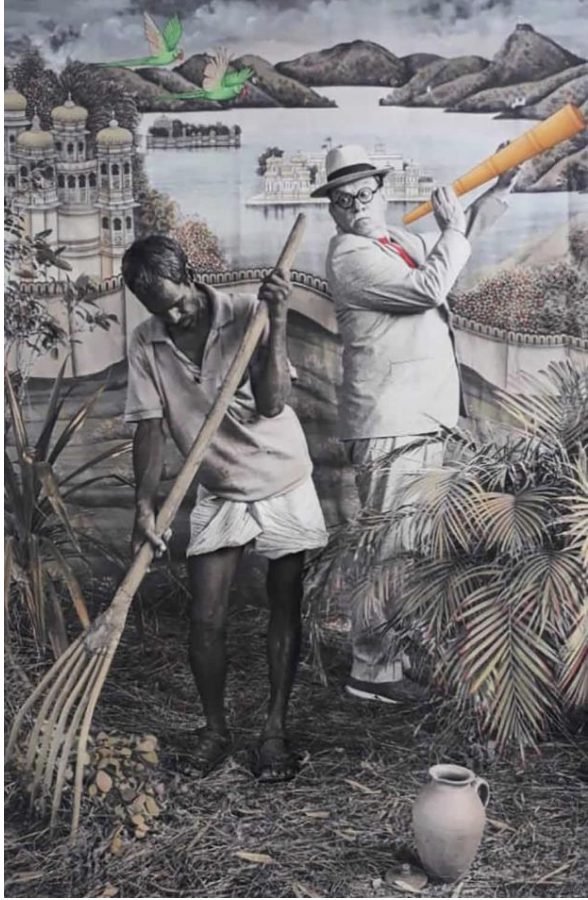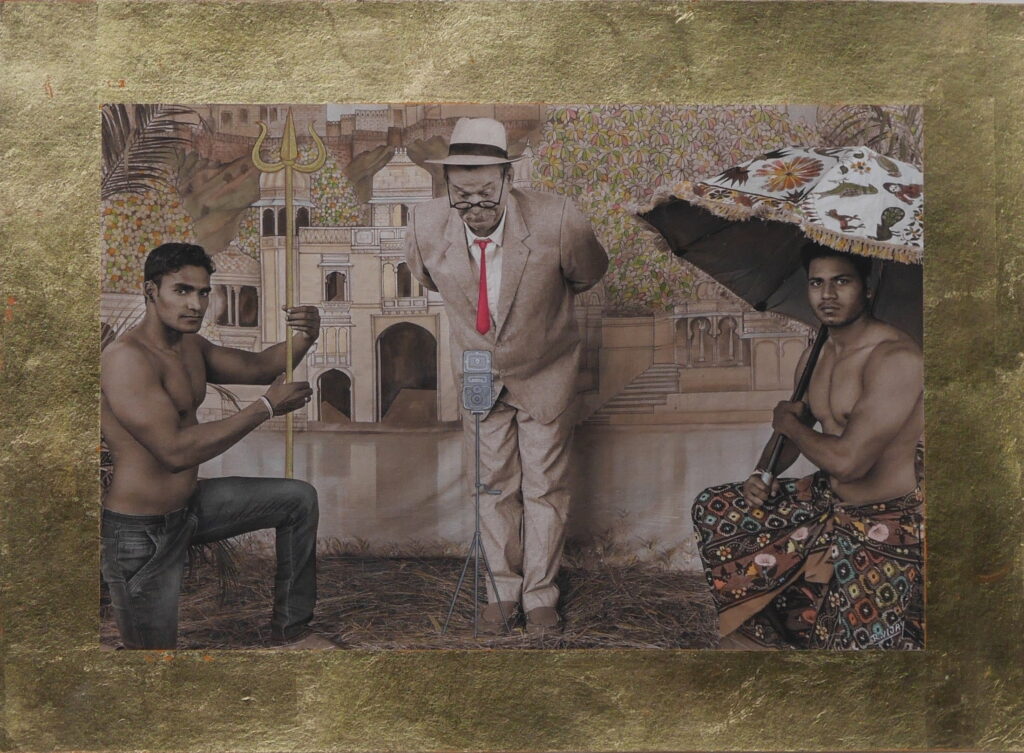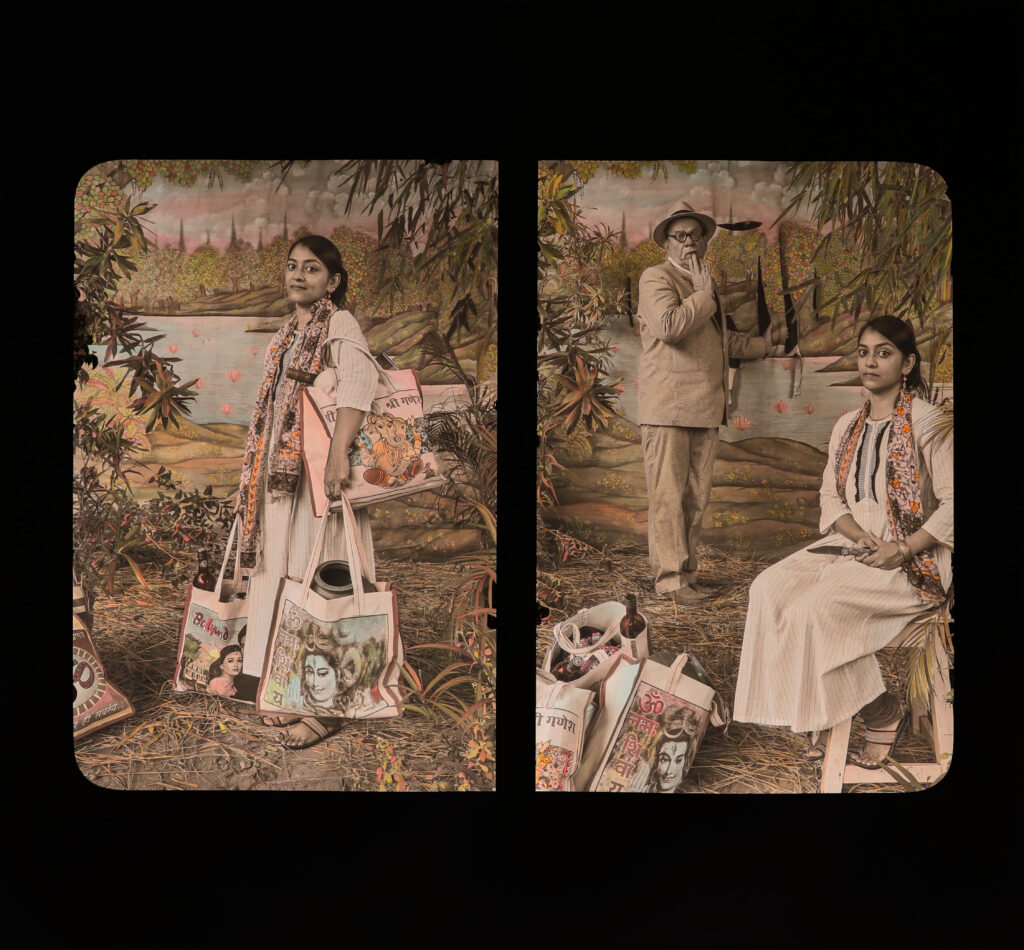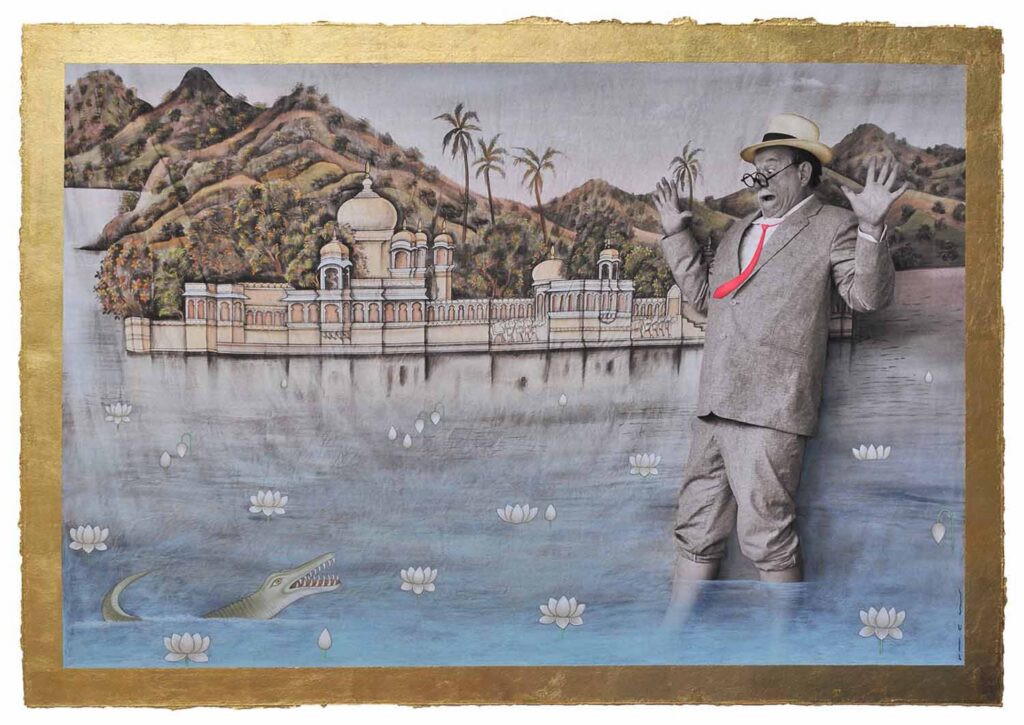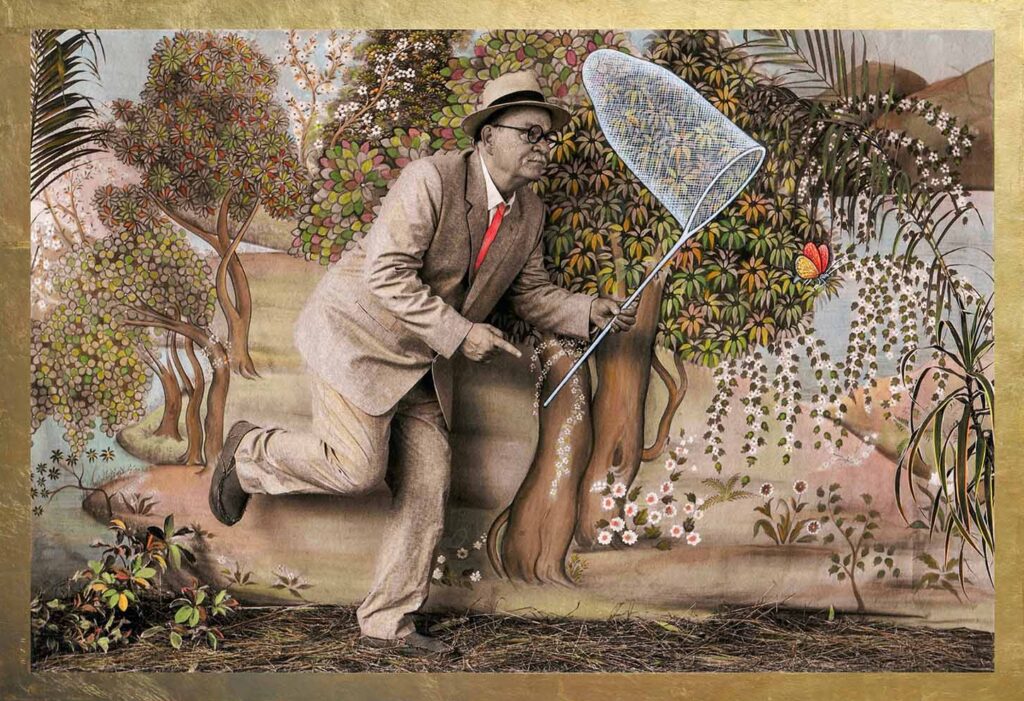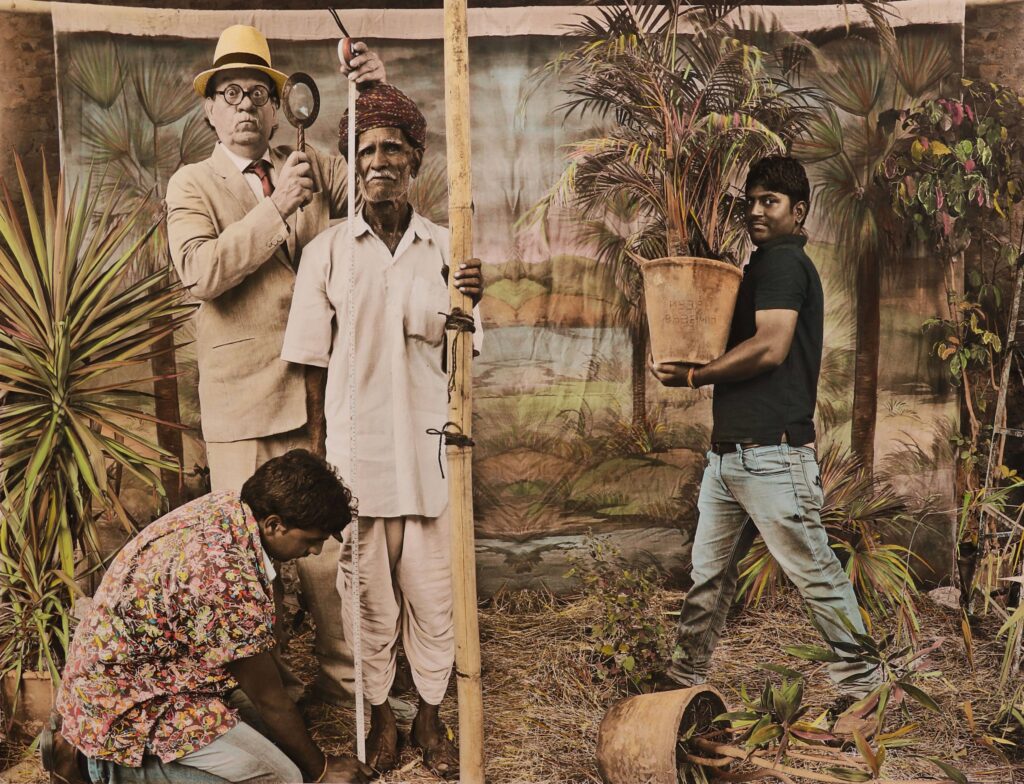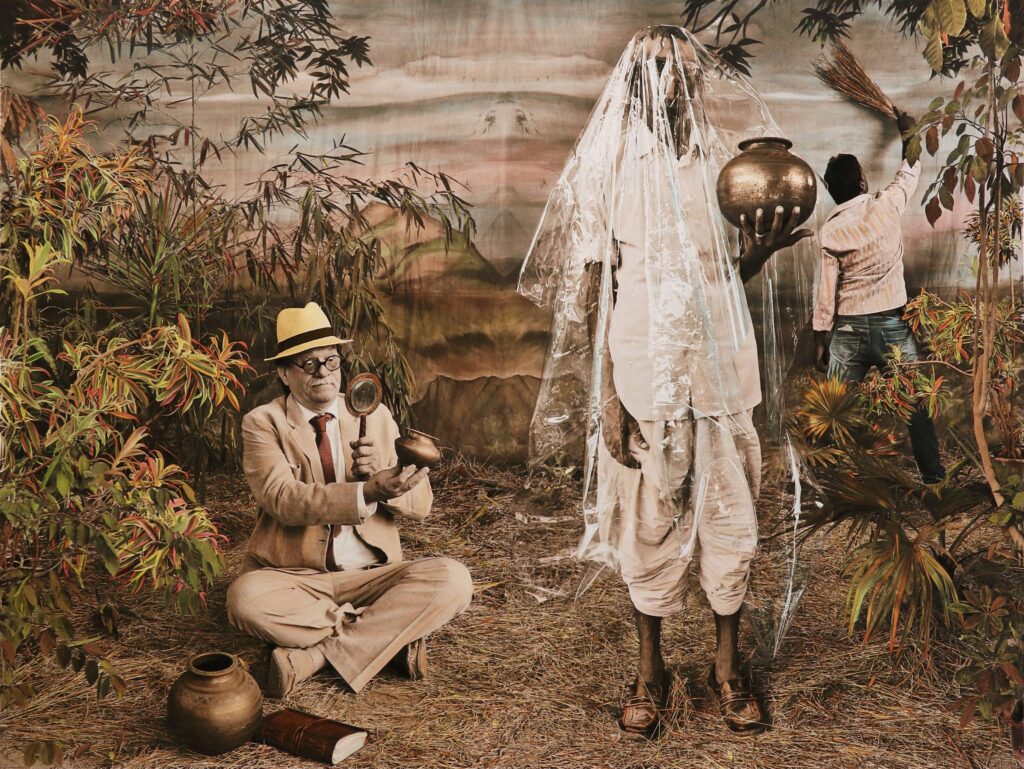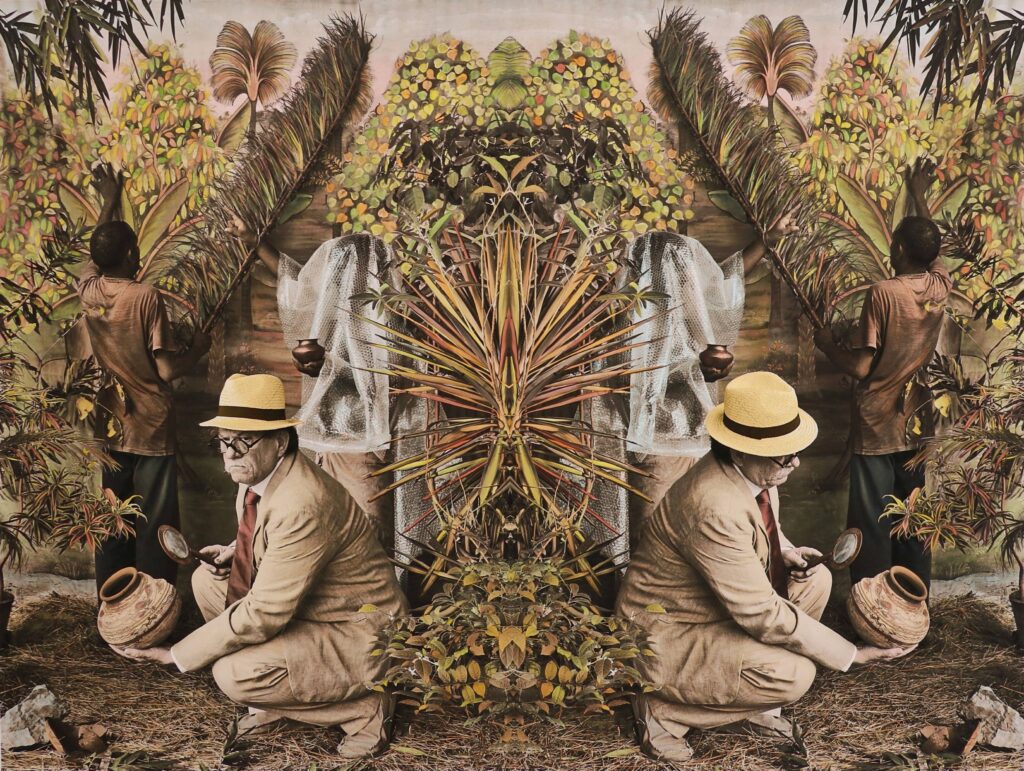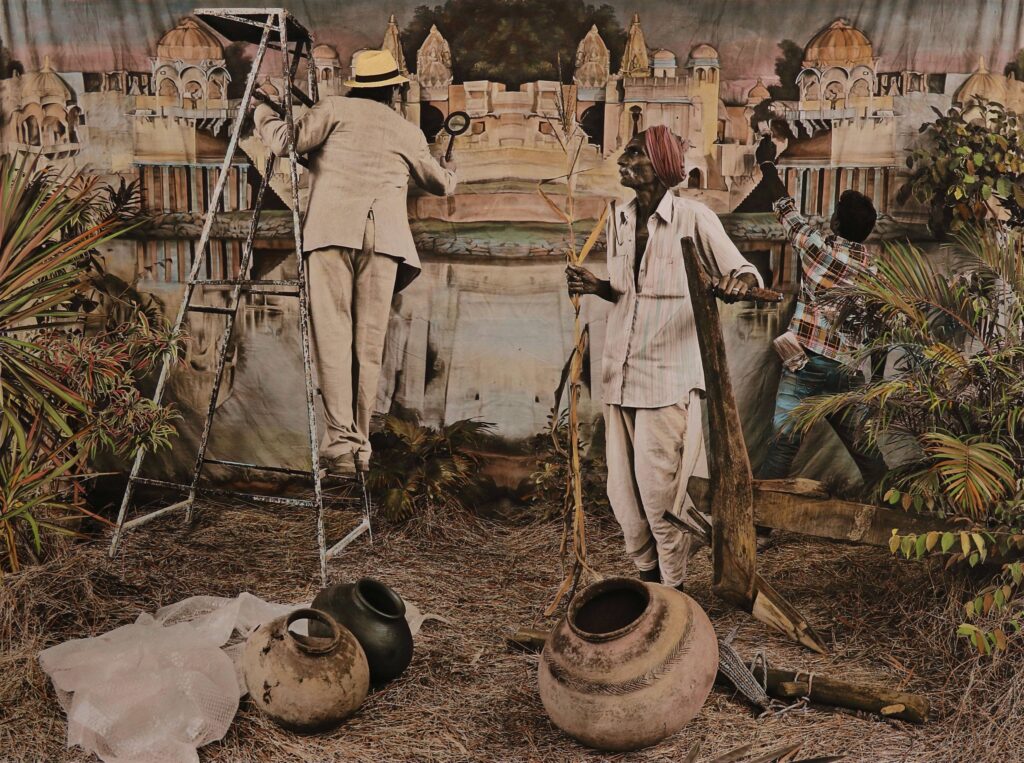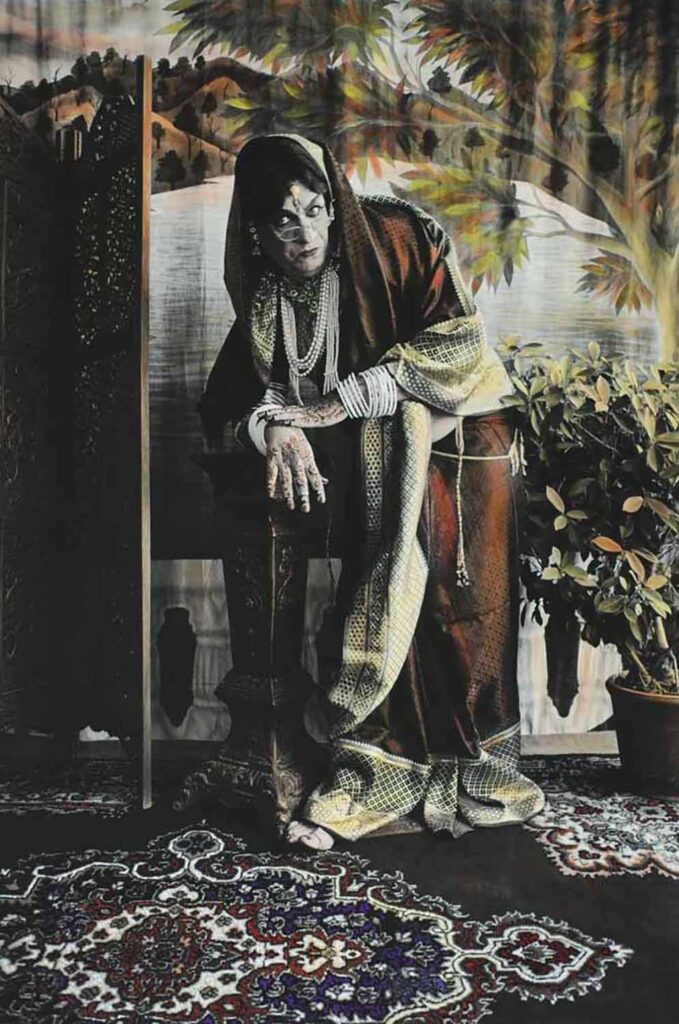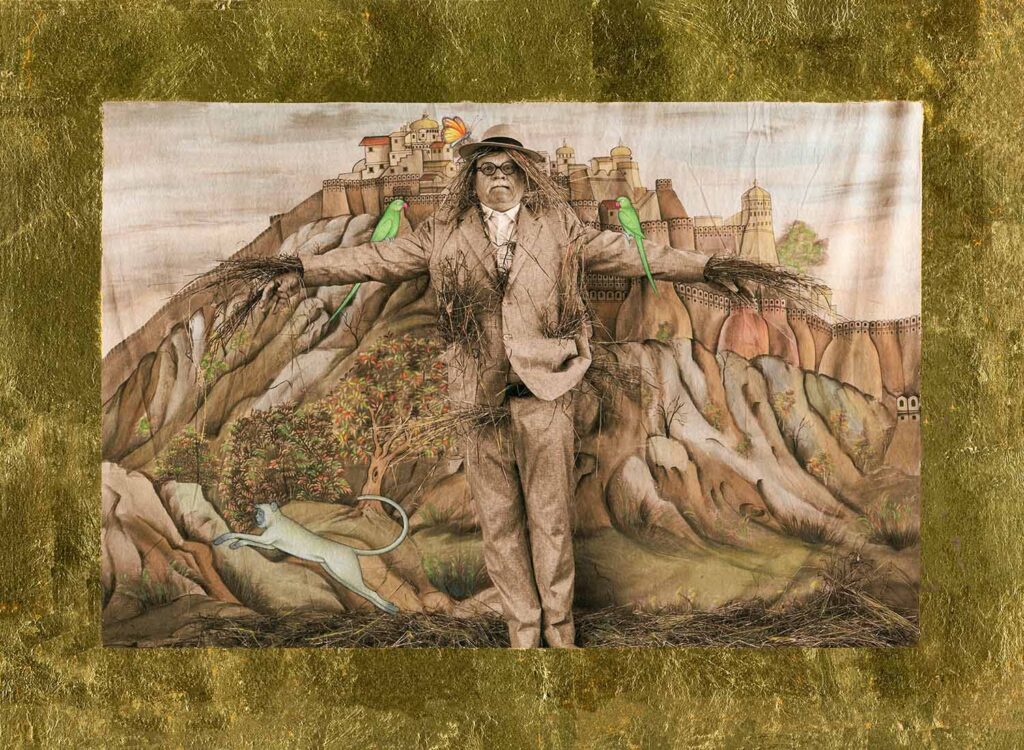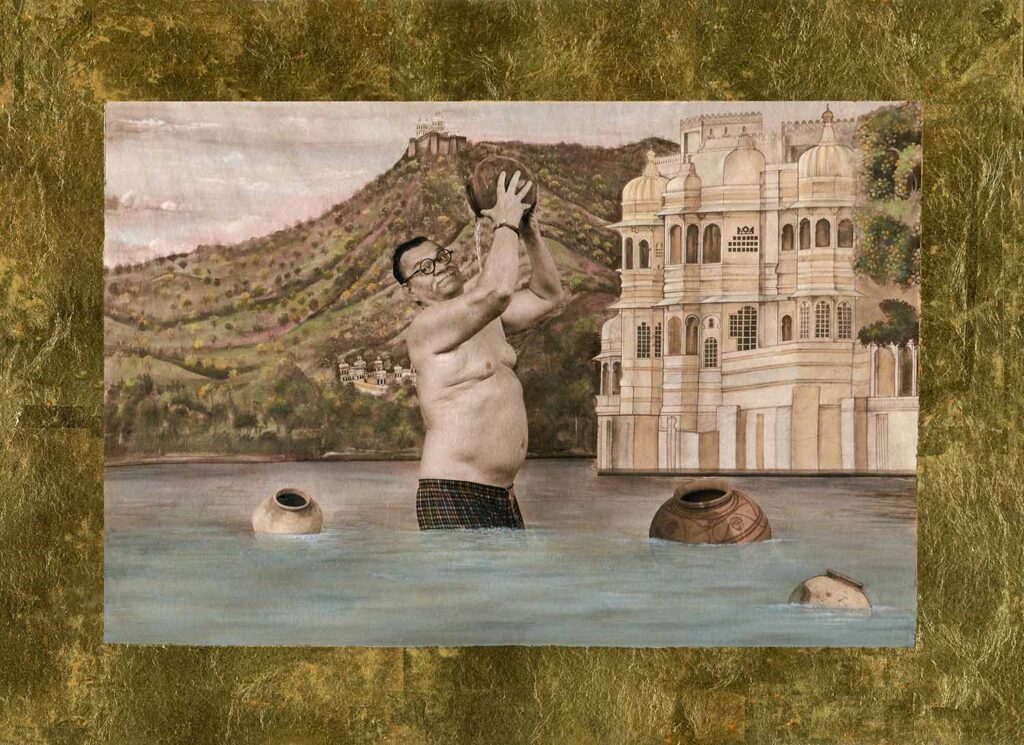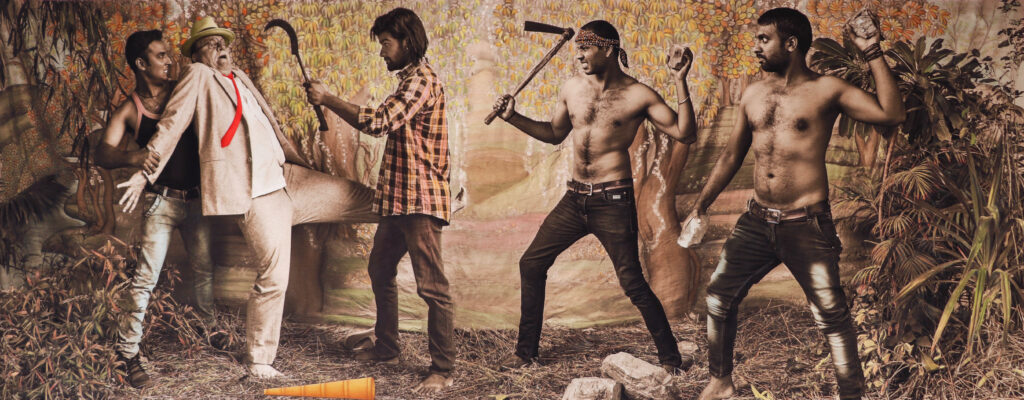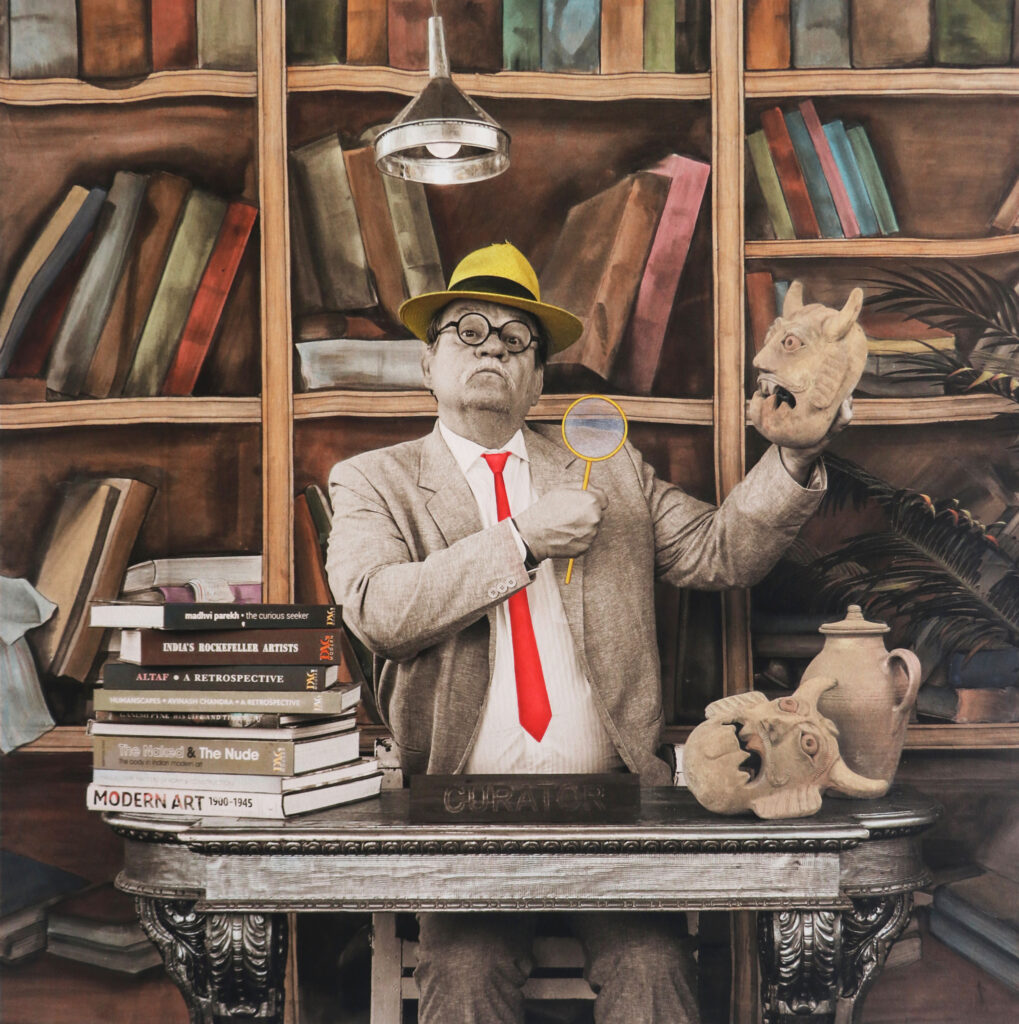We Are Always Working
Aug 28, 2020 - Sep 28, 2020
- SELECTED WORKS
- CURATORIAL NOTE
- REVIEWS
- INVITE
- PRESS RELEASE
- DOWNLOAD CATALOGUE

‘We Are Always Working’ showcases works by American born photographer Waswo X. Waswo, in collaboration with Rajasthani miniaturist Rajesh Soni and traditional terracotta sculptor Shyam Lal Kumhar. Part portraiture from Waswo and Soni’s well-known Studio in Rajasthan series, and part spoof on both the studio process and the photographer himself – this exhibition calls attention to the place of performance, or the “stage”, upon which studio photography is enacted. The title, ‘We Are Always Working’ references the ongoing process Waswo and his studio engage in, both physically, as well as in a wider philosophical discourse concerning his practice and methods.
CURATORIAL NOTE
In a world where academic and even popular discourse has moved beyond Saidian concepts of Orientalism and Othering to a new and broader terrain that encompasses “whiteness”, “privilege”, and “cultural appropriation”, the foreign white artist in Asia finds his or herself in ever more uncomfortable political/philosophical positions. For those of us who make an attempt at art making (I consider photography intrinsically linked with the other arts), the knowledge that we will probably trespass a critical line of “correctness”, intentionally or unintentionally, is always there. As an artist-photographer who has lived and worked in India for well over sixteen years, a large part of my concerns have been with navigating, responding to, or combatting what sometimes seems as an insurmountable outsider-ness both within and beyond the Indian art scene. This “outsider-ness” extends to geographies elsewhere aside from India, where both white and non-white curators question the validity of a non-Indian claiming membership in the “Indian artist club”, bringing up the issue, rightly or wrongly, of racial identity as a signifier. All of this sounds drearily overwhelming, and it is precisely due to this that my art has often veered into self-deprecating humour. The hand-colored photographs that I make in collaboration with Rajesh Soni are paired conceptually with the miniature paintings that I make in conjunction with R. Vijay. In the miniatures, the foreign photographer becomes a humorously sympathetic (though culturally bumbling) caricature placed in situations that address his very foreignness, his lack of understanding, his privilege and his otherness; his simple joys and also the depths of his alienation. On the other hand, we can imagine these photographs as the images this man in the miniatures has clicked. These photographs look outward at his Indian “subjects”, always portrayed against painted backdrops similar to the landscapes in the paintings. These portraits seem to be of the people the foreign photographer has encountered along his journeys through the imaginary miniature realms. They are not very serious documents as much as his personal souvenirs and the Indian people who populate them react with poses and expressions that range between welcoming, intrigued, aloof, suspicious, and stern. The effect of this conjoined aesthetic subterfuge is to subvert Ethnography and Orientalism, converting potentially oppressive encounters into playfully concocted and collaborative theatre. Photographic self-portraiture has been another tactic of mild humour employed to signal the self-awareness of my practice. In these portraits I enact the role of the fedora-wearing gentleman of the paintings. As in the miniatures, he is at times a representative of self, at others an Everyman, at others an “Evil Orientalist” (a role that I’ve embraced with tongue-in-cheek glee). These self portraits are tinted and painted by both of my Indian collaborators, Rajesh and Rakesh, and thought our collectors have yet to fully embrace them; to us these images are integral to the body of our work. They carry forward, and further complicate, the ever-evolving narrative. Mild, self-critical humour always has a humanizing influence. Employing it was never a deeply thought-out strategy, but a reply from the heart, a plea for acceptance and recognition regardless of identity and theory. To some extent that has succeeded. I continue to live and work in Udaipur, thinking of it as home, and slowly but surely our efforts have been recognized and sometimes acclaimed. The issues of Otherness and Othering remain, but keeping lightness in approach does the best job of lighting our way of making.



















